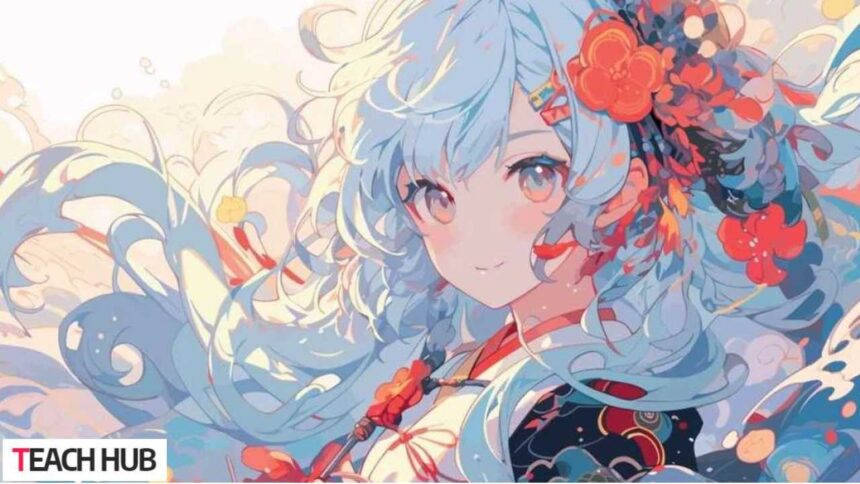In my exploration of Japanese literature, I stumbled upon a thought-provoking manga titled “komik hisashiburi ni jikka ni kaettara otouto ga ts shiteta” (translated as “Comic: After a Long Non Appearance, I Got back to Find My Younger Sibling Had Turned into a Young Lady”). It delves deep into themes of gender identity, familial bonds, and personal discovery, challenging societal norms with its poignant narrative.
This manga compellingly explores how individuals navigate the complexities of gender identity and acceptance within their families and communities.
I invite you to delve deeper into this insightful manga to discover its profound messages about identity, resilience, and the power of unconditional love. Let’s explore together how “komik hisashiburi ni jikka ni kaettara otouto ga ts shiteta” enriches our understanding of these important themes.
Plot Summary
The manga “komik hisashiburi ni jikka ni kaettara otouto ga ts shiteta” follows the story of a protagonist who returns home after a prolonged absence, only to discover a significant change in their younger sibling: they have transitioned to identify as a young lady.
This revelation sets the stage for a narrative that intricately explores the challenges faced by both characters as they navigate the complexities of gender identity and familial acceptance.
Throughout the manga, the story unfolds through a series of vignettes, each offering glimpses into the characters’ lives as they confront their own biases, fears, and societal expectations.
These vignettes not only highlight the personal growth and resilience of the siblings but also provide a nuanced exploration of family dynamics and the broader societal pressures that shape their journey.
Themes and Symbolism
“komik hisashiburi ni jikka ni kaettara otouto ga ts shiteta” navigates the journey of its characters through the intricate landscape of gender identity. It delves into the protagonist’s discovery of their sibling’s transformation into a transgender woman, exploring the profound impact on their own understanding of identity and acceptance. Through nuanced storytelling and character development, the manga challenges stereotypes and promotes empathy towards personal journeys of self-discovery.
Family Dynamics and Acceptance
At its core, the manga portrays the evolving dynamics within a family grappling with unexpected changes. Initially shocked and confused, the protagonist and their family navigate a path towards acceptance and understanding. The narrative highlights the complexities of familial relationships, emphasizing the importance of love and support in overcoming societal expectations and embracing individual differences.
Also Read: Little_mermaidd0 Adventure: Diving Into The Depths Of Online Identity
Societal Expectations and Prejudice
“komik hisashiburi ni jikka ni kaettara otouto ga ts shiteta” bravely confronts societal norms and prejudices faced by LGBTQ+ individuals. Through its characters’ experiences of discrimination and misunderstanding, the manga prompts readers to reflect on their own biases and encourages a broader acceptance of diverse identities. It challenges cultural stereotypes, advocating for inclusivity and fostering a deeper appreciation of human complexity.
Character Analysis
Here’s the character analysis:
The Protagonist
At the outset of “komik hisashiburi ni jikka ni kaettara otouto ga ts shiteta,” the protagonist returns home after a prolonged absence, expecting familiarity but encountering a transformative revelation instead.
Initially depicted as reserved and perhaps apprehensive of change, their reaction to discovering their younger sibling’s gender transition is one of shock and confusion.
However, as the story unfolds, we witness their profound personal growth. Through introspection and emotional challenges, the protagonist evolves from uncertainty to a deeper understanding and acceptance. Their journey mirrors a broader theme of self-discovery, as they courageously navigate familial expectations and societal norms.
The Sibling
Contrasting with the protagonist’s initial uncertainty, the sibling in “komik hisashiburi ni jikka ni kaettara otouto ga ts shiteta” embarks on a poignant journey of self-acceptance and resilience. Faced with societal pressures and the complexities of gender identity, they demonstrate unwavering courage in embracing their authentic self.
Despite initial familial tensions and external prejudice, the sibling’s narrative arc portrays a steadfast commitment to personal truth. Their journey challenges traditional norms and underscores the importance of self-esteem and familial support in navigating identity complexities.
Writing Style and Artistic Approach
The manga “komik hisashiburi ni jikka ni kaettara otouto ga ts shiteta” showcases a masterful narrative style that skillfully blends humor with profound introspection. The writer adeptly weaves moments of light-hearted comedy into the narrative, providing relief amid deeper explorations of identity and acceptance. This balance engages readers and allows for a nuanced portrayal of complex themes.
Visually, the manga’s artwork plays a pivotal role in conveying emotions and enriching the storytelling experience. Each panel is meticulously crafted, with expressive character designs and detailed backgrounds that immerse readers in the characters’ worlds. The artist’s use of color, shading, and panel layout enhances key scenes’ mood and emotional impact, effectively drawing readers into the characters’ inner struggles and triumphs.
“komik hisashiburi ni jikka ni kaettara otouto ga ts shiteta” stands out not only for its compelling narrative and character development but also for its artistic prowess. The seamless integration of humor and poignant storytelling, coupled with visually stunning artwork, makes it a standout work in exploring themes of identity and familial relationships.
Also Read: Jenna Haze: The Evolution of an Icon in the Entertainment Industry
Impact and Significance
The manga “komik hisashiburi ni jikka ni kaettara otouto ga ts shiteta” has garnered significant praise within the LGBTQ+ community for its sensitive portrayal of gender identity and acceptance. By depicting the journey of its characters with empathy and authenticity, the manga has become a poignant voice for those navigating similar struggles in real life. Its portrayal of familial acceptance and personal growth resonates deeply, fostering meaningful discussions and promoting understanding within diverse audiences.
Beyond its cultural impact, “komik hisashiburi ni jikka ni kaettara otouto ga ts shiteta” has inspired adaptations and spin-offs across various media formats. These adaptations further amplify its message and reach, expanding its influence on a broader scale. By exploring themes of identity and resilience, the manga has sparked a wave of creativity and introspection, encouraging other storytellers to explore similar narratives with depth and sensitivity.
(FAQs)
What is “komik hisashiburi ni jikka ni kaettara otouto ga ts shiteta” about?
“komik hisashiburi ni jikka ni kaettara otouto ga ts shiteta,” translated as “Comic: After a Long Non Appearance, I Got back to Find My Younger Sibling Had Turned into a Young Lady,” explores themes of gender identity, familial relationships, and personal discovery.
Why is “komik hisashiburi ni jikka ni kaettara otouto ga ts shiteta” significant within the LGBTQ+ community?
The manga is celebrated for its sensitive portrayal of gender identity issues. It promotes empathy and understanding, resonating with readers facing similar real life challenges. Its depiction of familial acceptance and personal growth has made it a meaningful voice within the LGBTQ+ community.
How has “komik hisashiburi ni jikka ni kaettara otouto ga ts shiteta” influenced literature and cultural discourse?
The manga has sparked important discussions about identity, resilience, and societal acceptance. Its impact extends beyond entertainment, encouraging broader cultural conversations about diversity and inclusion. Adaptations and spin-offs inspired by its themes further amplify its influence in literature and popular culture.
What themes does “komik hisashiburi ni jikka ni kaettara otouto ga ts shiteta” explore?
The manga delves into gender identity exploration, familial relationships, societal expectations, and personal growth. It uses humor and profound storytelling to navigate complex issues with sensitivity and depth.
How does “komik hisashiburi ni jikka ni kaettara otouto ga ts shiteta” contribute to challenging stereotypes?
By presenting authentic and nuanced portrayals of gender identity and familial dynamics, the manga challenges stereotypes and encourages readers to rethink traditional norms. It promotes empathy and understanding, fostering a more inclusive perspective on diverse experiences.
Conclusion
“komik hisashiburi ni jikka ni kaettara otouto ga ts shiteta” challenges stereotypes by depicting gender identity and family acceptance authentically. Its heartfelt narrative fosters empathy and understanding, prompting readers to relate to diverse experiences.
This manga’s contribution to literature and cultural discussions is profound. It sparks important dialogues about identity and resilience. It is a testament to how storytelling can break barriers and promote inclusivity. As we explore its themes, we recognize its enduring impact on shaping a more compassionate and accepting society.



